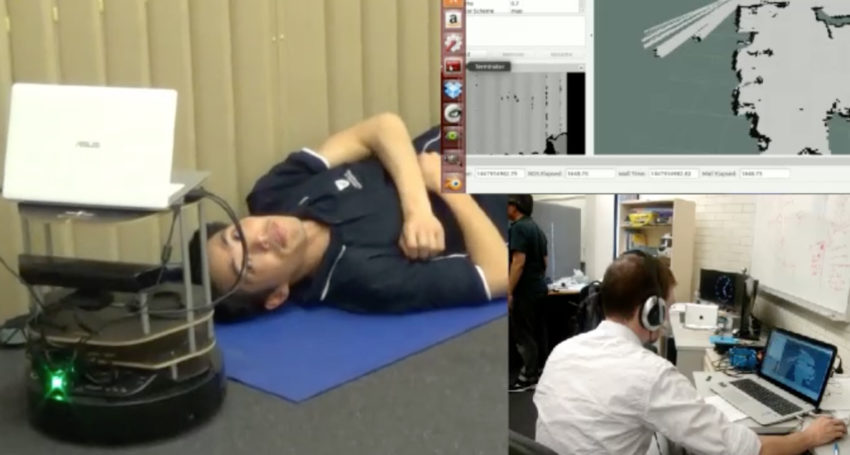Companion robots to help elderly fall victims rise again
Health & Medical
Robots are being developed to help elderly people get back on their feet after a fall at home.

Sign up to receive notifications about new stories in this category.
Thank you for subscribing to story notifications.

University of South Australia computer science PhD candidate Kalana Ishara Withanage has teamed up with engineering and health experts from the university to work on the project.
Pressure sensors located in the floor of the elderly person’s home will be used to alert the robot that something has happened, and direct it to provide assistance.
Withanage said the algorithm being developed would then allow the companion robot track an individual’s progress as they stand up and, using the robot’s onboard cameras, provide corrective guidance if the person tried to undertake an unsafe movement.
“There could be camera and floor sensors in the home to roughly identify that something has happened, but it doesn’t necessarily mean a fall. The robot could then go to the area to see what has happened – whether a fall or something else – and it could differentiate an incident from an emergency,” he said.
“Currently, the robot seeks out the elderly person and calls a healthcare professional, but from that point onwards, the remote carer takes over control.
“By the end of my research, it will be completely autonomous – the robot will able to direct the patient on its own.”
The research is the first of its kind, with no robots previously using audio-visual prompts to aid the elderly autonomously.
Withanage said the robot would also be equipped to monitor heart rates remotely and converse with the fall victim using voice recognition software.
He said there were about 80,000 elderly falls in Australia every year, some of which resulted in death or serious injury.
“Most aids that currently exist involve some human intervention – this is going to be without human intervention,” Withanage said.
“The robot can detect sub-activities, such as rolling to the side or crawling. If the person is moving, the robot can take steps backwards or forwards. It can also push supporting structures towards the person to help them get up.”
The research began when project supervisor Dr Ivan Lee recognised a gap in the market after speaking with elderly fall prevention expert at the University of South Australia Associate Professor Shylie Mackintosh.
Withanage said the technology could also be adapted to provide real-time guidance for athletes or assist victims and emergency workers in disaster environments.
“We could see this used in natural disasters, for example after a tsunami scenario. The robot could go into the environment and see whether the person needs any assistance and provide it as required,” he said.
Although the robot technology is still in early stages of development, the research team is confident a full prototype will be completed by February 2018.
“A few years ago, we didn’t expect to see robotic vacuum cleaners or lawn mowers, but now they are appearing in the market – so likewise, it could take another decade, but in that time, people will have their own robots in home environments,” said Withanage.
“My thought was, we have robots but it’s a shame that they can’t assist people in trouble.”
South Australia has the highest proportion of older people on mainland Australia, with almost one third of its population aged over 50.
It’s also the destination of choice for retirees, topping the list for most popular retirement regions in Australia according to data released last month by consultancy firm CoreLogic.
The state’s capital Adelaide will host next month’s Ageing Well conference, which will bring together experts from around the globe to discuss the future of the aged care service industry.
South Australia’s capital Adelaide has three long-standing public universities, Flinders University, University of South Australia and the University of Adelaide, each of which are consistently rated highly in the international higher education rankings.
Jump to next article



